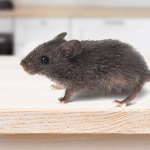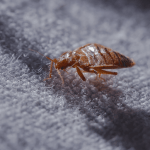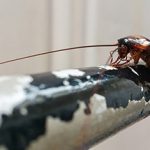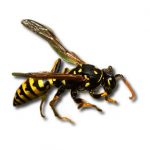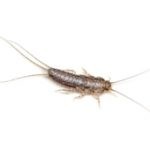Life Cycle of Common UK Mosquito Types
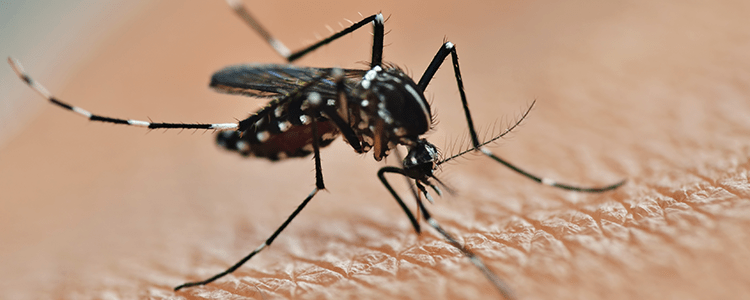
More than 30 mosquito species live in the UK, some of them native and others that are invasive. With climate change and rising temperatures, mosquito populations are increasing, bringing new species and potential health concerns. While the UK does not have the same mosquito-related disease risks as tropical regions, some species can still cause irritation and allergic reactions.
This guide will help you understand the different types of mosquitoes in the UK, how to identify them, and the most effective ways to prevent mosquitoes bites.
The Life Cycle of a Mosquito
Mosquitoes go through four distinct stages in their life cycle:
Mosquito eggs
Female mosquitoes lay eggs in or near water. Some species lay them in clusters (rafts), while others lay them singly. The exact location and number of eggs laid depends on the mosquito species. When not placed directly on the water, eggs are placed in positions where they will be exposed to it through flooding, irrigation or rain. Eggs can remain dormant for months or even years until the right hatching conditions of sufficient moisture and the right temperature range are met. Many mosquito species in the UK overwinter as eggs.
Mosquito larvae
Mosquitoes eggs hatch into larvae, commonly known as “wigglers.” They live in water and feed on organic matter. Larvae live in water but close to the surface as they need to breathe air. Most often mosquitoes larvae hang just beneath the surface suspended by water tension. As larvae mosquitoes feed and grow, they moult several times. The larval stage of the mosquito life cycle lasts between 4 and 14 days depending on the species, the temperature, and the availability of food. Some mosquito species overwinter as larvae, though this is less common than overwintering as eggs.
Mosquito pupa
The larvae develop into pupae, also called “tumblers.” This is a resting stage where they do not feed but undergo metamorphosis. This third stage of the mosquitoes life cycle also takes place in water. The pupa still needs to breathe air but employ a ‘tumbling’ motion to move between the surface and to deeper water where they are safer from birds that prey upon them. The pupa stage lasts between 1.5 and 4 days, again depending on species and water temperature.
Read more about Natural Ways to Repel Mosquitoes
Adult mosquitoes
The fully developed mosquito emerges from the pupa and begins its life cycle. Female mosquitoes seek blood meals to produce eggs, while males feed on nectar. Male mosquitoes generally emerge first and remain near the hatching ground to mate with the new adult females. It is only in the adult stage that mosquitoes bite humans, spread disease and wreak havoc upon humanity and other species.
Lifespan of a mosquito
The lifespan of a mosquito varies depending on the species and environmental conditions. Generally:
- Male mosquitoes live for about one week and do not bite humans, as they primarily feed on plant nectar.
- Female mosquitoes can live from two weeks to a month, depending on temperature, humidity, and availability of blood meals.
- Some species, such as Culex pipiens, can enter diapause (a form of hibernation) and survive several months during colder seasons.
- Warmer temperatures and high humidity can extend mosquito lifespans, allowing them to reproduce more frequently.
Most mosquitoes don’t live for very long. Their natural lifespan depends on the species and can vary from a few days to a few months. Some species only survive a single summer, the adults die as the temperature drops, leaving their eggs behind to restart the cycle the following year. In a few species, the adult female hibernates during the winter, seeking a sheltered location when the weather turns cold and entering hibernation with fertilized eggs inside them.
Male vs female mosquitoes
Any mosquito you can hear is female, their wings beat at around twice the rate of male wings and it’s this high rate of movement which generates that annoying buzzing sound. The mosquito that just bit you is definitely female, as male mosquitoes don’t bite. Males live for only around 7 to 10 days and feed entirely on plant nectar. Female mosquitoes also feed partially on nectar but need a blood meal in order to lay eggs.
There are a number of other differences between male and female mosquitoes. These are so marked that it’s possible to distinguish the two by sight. Male mosquitos are only half the size of their female counterpart and their antennae are covered with fine hairs, to the extent that they look bushy to the naked eye. These fine hairs, correctly known as flagella are used by the male to hear the female which he’s looking for her to breed.
What Kind of Mosquitoes Are in the UK?
There are more than 30 species of mosquitoes in the UK, but the most commonly encountered include:
- Culex pipiens (Common House Mosquito) – The most widespread species, often found breeding in standing water. They primarily feed on birds but can bite humans. This is a brownish mosquitoes type with beige bands over the abdomen, and evenly coloured grey wings and dark legs. In size, the female is around 4-10 mm. The larvae of this species are capable of surviving in heavily polluted water, while the adults overwinter in homes.
- Culiseta annulata (Banded Mosquito) – A larger mosquito with distinctive pale bands on its legs. It bites both humans and animals.
- Anopheles maculipennis (Malaria Mosquito) – While not currently a malaria carrier in the UK, this species is present in wetland areas.
- Aedes detritus (Saltmarsh Mosquito) – Found in coastal areas, this mosquito is an aggressive biter and can be active during the day.
- Aedes albopictus (Asian Tiger Mosquito) – A non-native species that has been spotted in parts of the UK due to warmer conditions. It is a potential carrier of diseases such as dengue and Zika virus.
Difference Between a Tiger Mosquito and a Normal UK Mosquito
The Asian Tiger Mosquito differs significantly from common UK mosquitoes in several ways:
- Appearance – It has a striking black and white striped body and legs, unlike the dull brown or grey colours of Culex or Culiseta species.
- Behaviour – Tiger mosquitoes are aggressive biters, often active during the day, whereas common house mosquitoes prefer to bite at night.
- Habitat – While native UK mosquitoes breed in standing water, the Tiger Mosquito can adapt to urban environments, including small water collections in plant pots and containers.
- Health tisk – Unlike native species, Aedes albopictus is a known vector for diseases such as Zika virus, dengue fever, and chikungunya.
What Are the Black Mosquitoes in the UK?
When people refer to black mosquitoes in the UK, they are often talking about:
- Banded Mosquito – A large, dark mosquito with pale banding on its legs.
- Malaria Mosquito – This species can appear dark in colour, particularly in low light.
- Asian Tiger Mosquito – This mosquito has a black body with white stripes and is more aggressive than native species.
- House Mosquito – While not completely black, this species can appear dark brown or grey, particularly when seen indoors.
Takeaways:
- There are over 30 species of mosquitoes in the UK, not all bite humans, but many do.
- Basic mosquito control measures centre around not providing breeding grounds for them by eliminating standing water.
- Some species of mosquito, which are not native to the UK, are becoming more prevalent here as our climate changes.
- The most concerning change centres around the growing prevalence of Asian tiger mosquitoes.
- There is not currently a significant problem with a mosquito-borne disease in the UK, but the potential for this to develop exists.
- If your own mosquito control methods fail or if you suspect you have tiger mosquitoes local to you, seek advice from a pest control professional.
Would you like an expert opinion on mosquitoes?
Keep in mind that we only aim to provide facts about mosquito types an lifecycle in general. We don’t provide any medical care advice.






